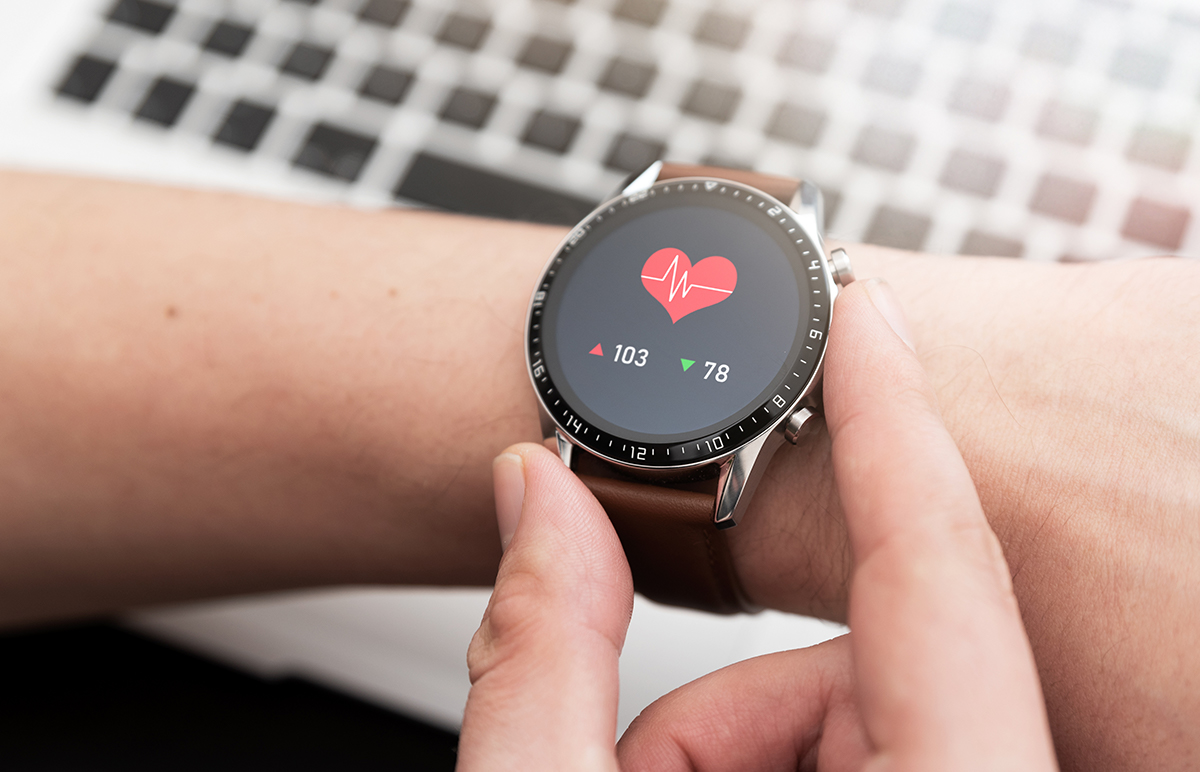Well-trained endurance athletes often have pulse values of 50 beats per minute or even lower at rest. If the resting pulse rate rises, it may be a sign of overtraining or of an infection.
What is the pulse?
With each heartbeat, the heart pumps blood into the arteries in bursts. With each pulse wave, the blood presses against the artery walls. These stretch very slightly and then contract again. These pulse waves can be felt wherever larger arteries lie close under the skin. In a healthy person, the pulse reflects the number of heartbeats. In some cardiac arrhythmias, the heart may stop pumping blood forward with each beat. In this case, the pulse rate is lower than the heart rate. Pulse rate generally varies greatly from person to person.
Why should athletes know their resting pulse rate?
How fast the pulse beats says something about the training condition as well as the general condition of the athlete. Regular training, especially endurance training, usually leads to a lower resting pulse. The reason: the trained athlete’s heart pumps more blood with each beat than the heart of a non-trained person. The faster the pulse returns to the value at rest after a load, the better the training condition (whereby the basic endurance is decisive for this). After a strenuous training period, the resting pulse may be slightly higher than usual. However, a higher pulse can also be a stress indicator or an indication of a serious illness.
What is a normal resting pulse rate?
There is no standard value for the resting pulse. However, it is relatively constant in individuals. In general, healthy adults have between 60 and 80 beats per minute at rest. For many marathon runners, however, it is completely normal for their heart to beat only about 40 times per minute or less at rest. The resting pulse rate is usually lower for athletes than for couch potatoes, with endurance athletes tending to have a lower pulse rate than people who primarily participate in weight training.
What Influences Resting Pulse?
Heart rate varies with age (children’s hearts beat faster than adults’) and time of day. It is affected by the weather, for example, and also by certain medications. If the resting heart rate becomes faster, this can be an indication that the athlete is training too much, because in overtraining the resting heart rate often increases. Various conditions can cause the resting heart rate to speed up, slow down, or become irregular. For example, it is faster in acute infections, slower in hypothyroidism, and irregular in atrial fibrillation.
What should be done if the resting pulse changes?
If the resting pulse rate becomes faster, this can be an indication that the athlete is training too much, because the resting pulse rate often increases during overtraining. Infections are also often accompanied by a higher resting pulse.
A higher pulse rate can also be a stress indicator or a sign of a serious illness. Cardiac arrhythmias, for example, can lead to a slower or faster pulse. If the resting pulse changes – provided it is always measured under the same conditions – it makes sense to ask a specialist for advice. If other symptoms such as dizziness or chest pain accompany it, a doctor should be consulted quickly.
What is the maximum pulse?
The maximum pulse is the highest possible pulse. It is also very individual and varies from person to person. There are formulas to calculate the maximum pulse (for example 220 minus age in years), but these formulas are very often not correct.
Tips
- Measure the pulse correctly
- The ideal time to take your pulse is in the morning, immediately after waking up, while you are still lying quietly in bed.
- Use two fingers to feel the pulse just before the wrist “thumb side”.
Then count for 20 or 30 seconds and multiply the value by three or two respectively – the result is the resting pulse per minute. - A pulse watch is simpler. To be sure that it measures correctly (especially when measured at the wrist), you should compare the values from time to time with the ones you measured yourself.
- The pulse is always given per minute.
 Who is Medbase?
Who is Medbase?
Medbase is the largest multidisciplinary sports medicine network in Switzerland and offers specialized sports medicine services for athletes, clubs and sports federations of all activity levels in the fields of sports medicine, sports physiotherapy, performance diagnostics and training advice.



